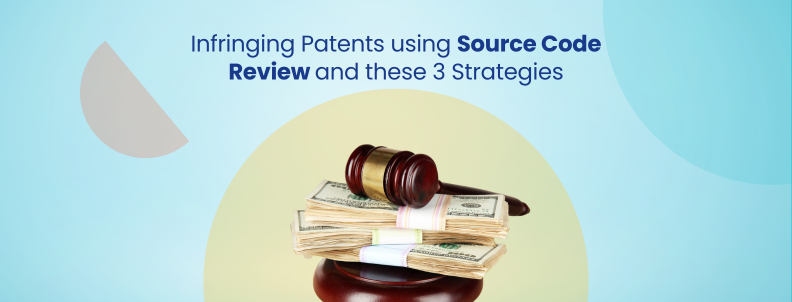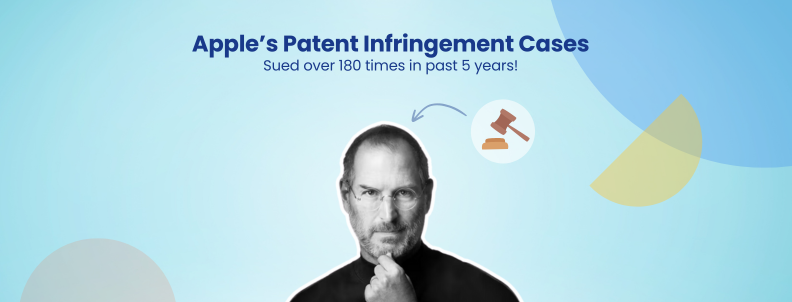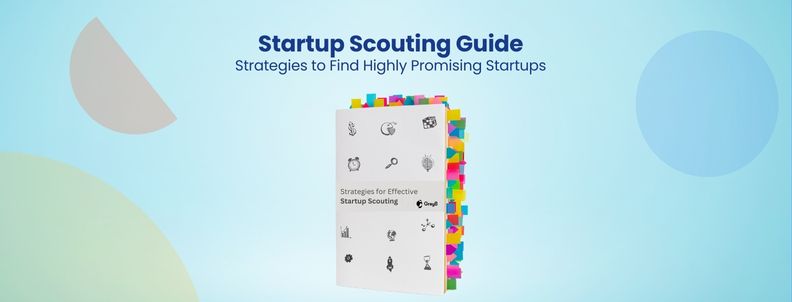Infringement analysis requires more than just being well-informed. While traditional methods may serve as a helpful starting point, they are often inadequate, given how time-sensitive patent infringement cases are.
And as GreyB researchers, we leverage our extensive knowledge and innovative strategies to overcome unique obstacles as quickly as possible.
In this article, we will share three search strategies using our cases to help you apply them in proving patent infringement.
Are you facing roadblocks in patent infringement cases and want a way out?
Reading between the code
Source code analysis provides a deep dive into the software, revealing potential patent infringements that may be hidden within lines of code. In one of our patent infringement cases, we dove deep into Android’s source code to deliver even more compelling evidence of overlap.
In this case, after comprehensive product testing and analysis, we found a 100% overlap. However, to solidify our findings, we decided to take an extra step.
Our focus shifted to Android’s source code, mainly looking for the section that showcases one of the claims in our subject patent. It was akin to finding a needle in a haystack. But this is where being code-savvy saved the day for us. We delved into the extensive directories on Android’s source code website.
To find our starting point, we studied articles on StackOverflow and Medium to learn about one of Android’s features to measure and display a user’s internet data usage.
This led us to a specific class responsible for these measurements. We scrutinized every line of code within this class and discovered “getUsageLevel,” which uses “getRxBytes” and “getTXBytes” methods to measure and display internet data usage.
We found the exact code responsible for Android phones’ measurement and display of internet data usage. But before delivering this information to the client, we cross-verified our findings with our in-house software developers. They concurred with our deductions, giving us the green light to share the good news with the client.
Taking that extra step and diving into source code analysis in infringement searches proved extremely fruitful. It allowed us to provide compelling evidence that strengthened our case.
Domain Expert Guidance
Domain expert assistance involves tapping into the knowledge of professionals who have specialized in a particular field related to a case. Their insights, drawn from years of experience, often uncover crucial information and perspectives.
One such case where expert guidance came in handy was a project we received in the telecom domain.
We were trying to find information on certain products. The patent’s claims were super specific, and there wasn’t much out there about the wireless stuff we were looking into, especially from the target company.
So, we decided to call in an expert: we contacted a telecom pro who’d been in the game for over 30 years. We had a chat with him about what we were up against. He didn’t hand over any evidence but shared that from his experience, it was likely that the products out there worked in the same way as our theory. This gave us a bit of a boost, and we dove headfirst into any paperwork of the target company, like user guides and product breakdowns.
A lot of discussions and thought process was put into selecting the right documents based on titles and believing that at least one of these would give us relevant information. We ran multiple iterations of this until we came across a very relevant document discussing how we wanted to map the clause in question.
We finally got the claim chart together, and our client was absolutely thrilled with the results.
Research papers
While research papers are a common source of information in prior-art searches, they are also valuable during infringement analysis. They offer a wealth of academic and scientific knowledge that can reveal critical details about specific technologies, helping us determine the extent of a patent’s reach or identify potential overlaps with other existing technologies.
In one of our recent patent infringement cases centered around content streaming technology, we encountered the challenge of confirming infringement by a renowned social media application. The patent claims encompassed essential elements such as storage, delivery networks, streaming engines, and processing engines.
Initially, we examined the company’s product literature, seeking explicit evidence of content delivery networks and processing mechanisms. However, the available documentation fell short of clarifying to confirm infringement conclusively.
Realizing the limitations of traditional means, we turned to research papers as a potential source of robust evidence. Through thoroughly exploring multiple databases, we stumbled upon a research paper authored by individuals associated with the target company. This particular paper delved into the intricacies of content delivery networks and video streaming, rendering it a highly valuable resource in our investigation.
To ensure a direct connection between the research findings and the actual technology employed by the target company, we then cross-verified the information. Confirming that the content delivery networks and streaming mechanisms described in the research paper were indeed implemented by the social media platform in their product.
Confirming alignment between the research findings and the target company’s technology implementation, we concluded that the social media platform had indeed infringed upon the client’s patent.
This case study underscores the significant role that research papers play in establishing patent infringement. It highlights the importance of exploring academic literature, including research papers, to obtain robust evidence and support claims that may be challenging to establish through traditional means.
Conclusion
When it comes to patent infringement, traditional methods may not always suffice because each case presents its own set of complexities and hurdles. Overcoming these challenges requires various strategies, as you read in this article.
Require assistance with patent infringement cases? Experience our expertise firsthand.
Tell us what you’re looking for, and our experts will help you navigate the complexities of your case.
Authored by: Annie Sharma, Editorial Team











